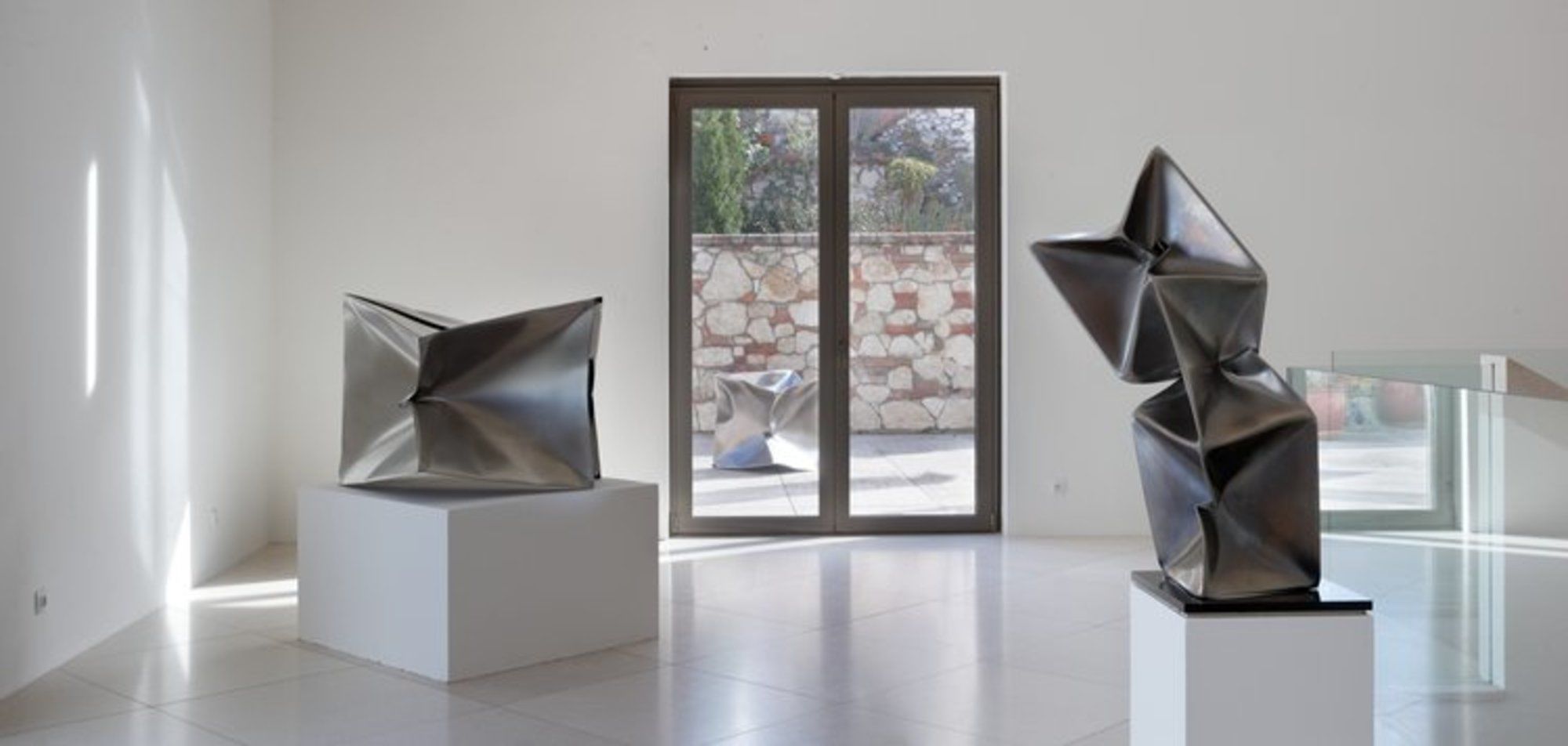Never Give Up the Joy of Collecting

The Závodný Gallery builds on many years of collecting and education in the field of fine arts. As one of the few private galleries, it presents not only Czech but also foreign artists, focusing mainly on geometry and minimalism. Its head and heart is Vladimíra Brucháčková Závodná.
How did you come up with this dramaturgical plan, which may seem quite bold for a private gallery in Mikulov?
The size of our country and the population are the basic indicators from which one can easily derive the possibilities of the art market – the number of quality artists, galleries, collector base and the power to present Czech art abroad. In my opinion, it is not so courageous to deal with art on an international scale, but rather self-preserving and necessary if a gallerist refuses to become a regional trader and hopes to develop and improve the collections of their clients as much as possible. Thanks to a programme with foreign participation, the gallery is gradually becoming an internationally renowned institution with many connections, a broader collector base and an interesting exhibition schedule.
Czech collectors tend to focus more on the local scene, with only a few venturing abroad. How successful are you in marketing foreign artists and who are your most frequent clients?
These days, they are mainly people who have a foundation of art collections made up of renowned artists from the 1960’s–1970’s. Each generation has its icons whose works are in demand, and they are gradually being joined by artists of younger generations. The gallerist then considers which artists to include in the concept of each collection. The representation of foreign artists in the collections helps to diversify the portfolio of works and allows the works to be approached on an international scale. High-quality foreign art offers the possibility of secondary sales in renowned auction houses, so the chances of successfully finding a collector interested in your work are multiplied, and the artwork’s price is more fixed and stable. The insight that the international scene brings to collectors helps to avoid investing in inadequately overpriced items.
People often ask me how to pick the right artists out of the almost overwhelming numbers, especially if we look abroad, and start building a relevant collection. What advice do you have for such an aspiring collector?
The best way is to understand which of the Czech authors collectors consider essential in their own collections and to define what kind of collection they want to create. Perhaps it’s a direction determined by a subject, a period, a certain group or a technique. Then they can start to look for alternatives to the works that are important to them in their collections in foreign representation. Most of the time, they will not go wrong, their collection will improve in quality and will bring them pleasure and benefit.
Is there anything they should watch out for?
They should never give up the joy of any item they buy, however small. It is the feeling of euphoria or fulfilment that brings them satisfaction, and for the authors the financial means necessary to survive. If the enthusiasm fades, sooner or later the collector will no longer feel the need to continue collecting.
At the last visit to the Závodný Gallery, the participants of the EduArt Roadshow saw a modern sculpture by German artist Ewerdt Hilgemann installed in the heart of Mikulov’s old Jewish quarter. What is the public response?
If a gallery functions properly, it will educate its visitors. The moment it decides to start working with the wider public or mainstream society, the ideal choice is to leave the interior of the gallery and bring art into the public space. However, this step requires a synergy with the municipal government, which must be willing to lend the public space to such a project and not be afraid of possible reactions from residents or visitors. In the case of objects of art you will almost always encounter both ways of perception. Some people like the piece, others like it less, some may even reject it outright. If the gallerist is confident that the presented work is of high quality, does not defame or ridicule anyone and does not deliberately cause offence or call for the destruction of public property, it is a good sign that the observer is led to a certain degree of acceptance or identification, or, on the contrary, to a critical attitude. Quite simply, the artwork does exactly what it is meant to do – provoke emotion. And it is fascinating how much can feelings change over time. It happens that at the first encounter the viewer completely rejects the work, but then they pass by the object every day, they get used to it, and accept it eventually. Subsequently, when the object gets removed, they miss it. Visual art is about the degree of habit and about shifting one’s own aesthetic, spiritual and empirical experience.
Is this why we need more quality art in public space?
I am quite positive. If the urban plans become cluttered with poor quality architecture, impenetrable greenery or inferior art, it is very difficult to correct these mistakes. Houses or statues remain on the streets of towns and villages for decades or centuries. If a location manages to build a functional, interesting house that is respectful of its surroundings, to place a quality work of art, to occupy a public space, people notice. These achievements then set a good example that people want to emulate. The whole region then quickly flourishes, a symbiosis or community of individual investors, architects and building authorities is created, the public space is pleasant, timeless, people-friendly – and everyone benefits.